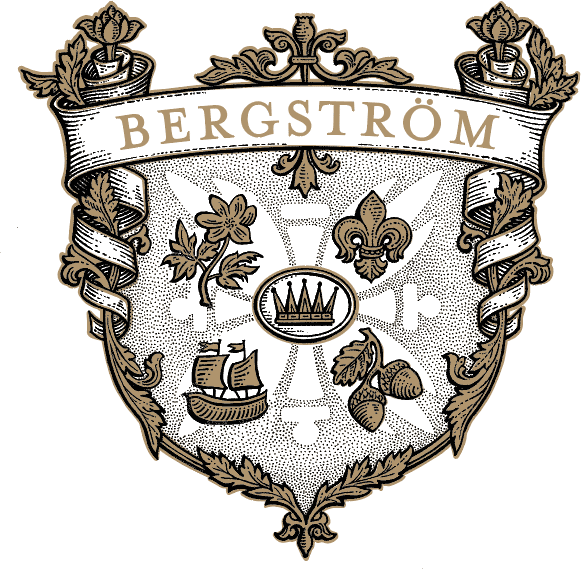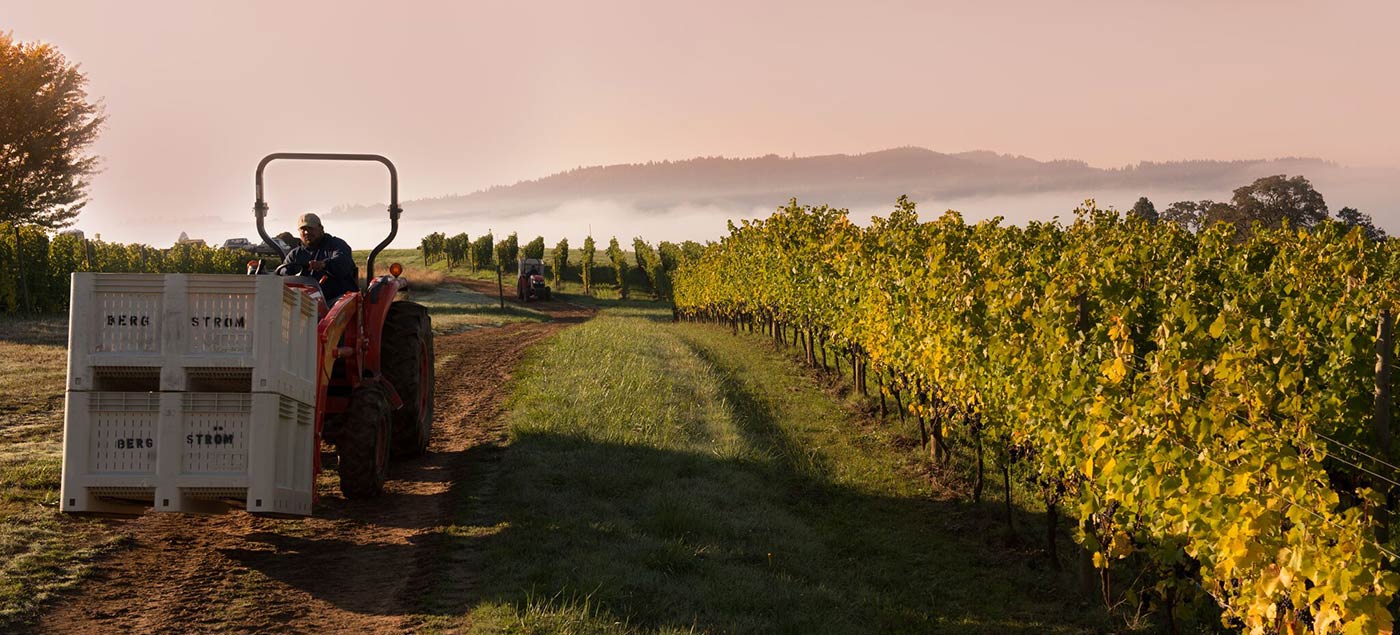The 2014 Vintage of Pinot Noir and Chardonnay is now mostly through secondary fermentation and is at a stage in its evolution where I am comfortable assessing its overall quality. As well, the 2013 vintage lineup is all in bottle and some of them are in the marketplace and going out in wine club shipments. This is one of my favorite times of the year, and one that is most educational for me, as we are farming one vintage, raising another vintage in our cellar, and selling a third vintage out in the international marketplace.
The 2012 wines are now gone for the most part but fret not, if you liked the 2012’s I have a feeling you will love the 2014’s. Both vintages were marked by sunshine and warmth during the harvest period. However 2014 had much more sunshine and much more warmth. It is the warmest vintage in Oregon’s history from start to finish. Warm vintages in cool climates can be either very rewarding or very disappointing. The disappointing ones are where we get a big heat spike at the end of the growing season that forces a quick and early ripening on grapes that are otherwise not physiologically ripe. 2003 and 2006 both come to mind. However in vintages like 2014 where the temperatures were above average and rainfall was scarce all year from bud-break to harvest you have a totally different vintage situation: one where the vines slowly and gradually adapt to the warmth and the drought and produce naturally concentrated and dense wines at their own pace rather than being rushed. 2014 Is such a vintage and I believe that it will be a monumental vintage for Oregon Pinot Noirs as not only the quality was high but production levels were higher than normal across the valley creating a win-win for wineries and consumers alike.
The 2014 wines are dark in color but not dark in color like a cool vintage where the winemaker decided to increase extraction activities in hopes that the resulting wines were not perceived as “elegant.” No, the 2014 grapes gave way to a naturally dark purple- red color immediately as they left the destemmer. These grapes were naturally physiologically ripe and the color speaks to the dry, hot arid year of 2014. What astonishes me the most about the 2014 wines is that with colors like those, you would expect overblown wines with low acidity levels and high alcohol levels which would put the vintage into my disappointing category but this is not the case! The 2014 wines have tremendous acidities for the vintage and alcohols are all below 14.2% in my cellar with many wines topping out in the high 13% which puts this vintage immediately into the rewarding and exciting category.
I have heard buzz about the 2014 vintage since the grapes hit the crush-pad which is a phenomenon that seems to be linked to eventual press-worthy vintages which consumers go crazy over. So clean up your barbecues and line up the party calendar in preparation for another 2012 type of a year and prepare to be quite impressed with the Oregon 2014 vintage.
If, In 2012 and 2014, it seemed as if Mother Nature was on vacation and forgot to turn the lights and heat off 2013 must have been the year where she decided to clean house. 2013 is a completely different story than its bookends and could prove to be the source of some very unique and noteworthy wines. But they didn’t come easy.
2013 started off similar to 2012 with a warm and dry season that was just humming along when all of a sudden we were whiplashed by what my good friend and neighbor calls “the Dragon’s tail.” Remnants of a powerful south Pacific monsoon swept up into the Pacific Northwest in the final week of September dropping between 4 and 7 inches of rain (depending on vineyard location) in a one week period. Now I love rain at harvest because I believe it tests our mettle as Oregonian winemakers. But 7 inches of rain is a bit much for me, especially in such a condensed period. So I, like many people, opted to pick the majority of my fruit before the storm struck. The rain forced my hand to pick fruit one week prior to the date where I would have picked the same quantity of fruit if the weather had remained constant.
What was important in 2013 was the quality of farming. This is actually the most important factor in any vintage but 2013 really brought the lesson home for some people. You see, I know some winemakers who harvested all of their fruit prior to the rain and are thrilled with what they got. I know others who hedged their bets and picked half before the storm and half afterwards and they too are thrilled with their decision. And I know others who waited to pick it all until after the storm and I have tasted some of those wines and they are successes. Not everyone was thrilled with what they got however and I would wager that the farming in those vineyard sites was not prepared for the weather we received in late September. If fruit had good integrity, no disease pressure and thicker skins then not only did the fruit weather the storm but it actually was able to hang on the vines for another entire month prior to being harvested as we enjoyed a gorgeous month of October. Where clusters were compromised and disease pressure was present, the fruit did not make it through the storm and quality and quantity were lost. Some vineyards lost all of their crop in the storm. It always comes down to farming.
2013 will look, smell and taste different than the 2014 wines. And perhaps many of you will sing Hallelujah to those differences. The 2013 Pinot Noirs are lighter in color, more lifted and floral in aroma with pure bright fruit essence. The 2013 wines are lithe and sleek and succulent with a real juicy red fruit core to them. These wines will please young for sure and yet some of them have the complexity and uniqueness paired with a vibrant natural acidity to go the distance. Only time will tell. Remember 2007, 2001 and 1999? Those who purchased those vintages know what I am talking about as they are enjoying some thrilling bottles of Oregon Pinot Noir and Chardonnay right now. The number one reason for that is acidity. Having to pick fruit one week earlier than normal because of a large forecasted rain event meant that our wines were endowed with thrilling natural acid levels which preserves the fresher more vibrant side of Pinot Noir. This is usually a formula for age-worthy and food friendly wines.
Now I don’t want to sound like the always optimist or naïve winemaker who believes there is no such thing as a challenging vintage having drunk the Oregon Kool-Aid. Nor do I mean to sound like I am blatantly trying to sell wine. Both of these vintages I mention offer potential pitfalls for the consumer for obvious reasons and you will need to stick with trusted wineries who have a track record for success and consistency of quality. 2013 wines that were farmed poorly could be thin, dilute or straight out flawed. 2014 wines could also, from certain houses, be alcoholic and flabby. But as we have learned, time and time again, the best wines in any vintage either warm or rainy, come from domains who pay close attention to their farming, their yields and maintaining an integrity and consistency of style. And that is why, just like Burgundy or California or Bordeaux or any region in the world, there will be wines that disappoint from these two vintages but the best efforts are worth seeking out and collecting. As a consumer, our mantra should be: “producer is everything and farming is more important than everything.”
The best of the 2013’s will be unique, expressive charismatic Pinot Noirs that could develop into majestic wines that everyone wishes they had invested in 5+ years from now. The best of the 2014’s will offer richness, concentration, extravagance and integrity unlike any warm vintage that we have seen in Oregon potentially yielding world class wines that could live for decades.

